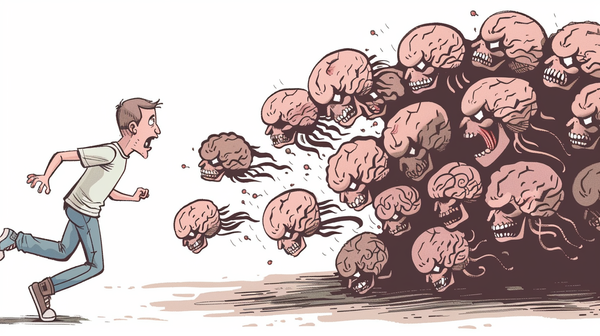Engaged Reading Time - Issue #41
A new day, a new dawn, a new week…
…so let's spend some time on exactly what "audience engagement" is, and how the discipline came to be.
Yes, it's a non-stop party in these parts… 🥳
Breaking down audience engagement
I blocked out some of my time today to catch up on the ageing tabs lurking on my office Mac, and one in particular caught my attention. I blogged about it this morning:

How The Correspondent plans to handle audience engagement
The Correspondent has revealed a little bit about how it's going to be run — and where its money is going.
I'd like to develop that theme a bit further here.
What we now know as audience engagement can be roughly split into two categories:
- Reach
- Community
One could certainly argue that "audience engagement" was born out of the merger of the two categories. While The Correspondent's plan to split the role in two makes a lot of sense, I also think it makes also makes sense to think of them as a combined discipline. Together, they are stronger. And this is why.
Reach
Reach encompasses both the old "social media editor" role, as well as related disciplines, principally SEO. It might also bring in tools like newsletters and podcasts, which both increase the reach of the publication without necessarily bringing direct community interaction.
This element of the discipline is about getting your journalism seen by the biggest number of the right people you can. And yes, I do mean the right people. Scale isn't the aim of every journalism operation, and in niche publishing, reaching that market is more important than big numbers.
However, this is mainly a distribution game — get the content out there, in the right form, to attract the right people.
You could think of this as an acquisition skill set.
Community
This encompasses the old "community editor" role. A common job title in forward-thinking publications in the mid-2000s, before the rise of social media, the community editor job was building relationships with readers through this new-fangled internet thing. In some ways it was an evolution of something like the old letters editor role — and for at least one title I worked with, it was exactly that.
Back then, we were dealing with blogs, forums and comments on articles. Nowadays, you can think of this as a discipline that involves any place where the interaction with the readers is conversational, rather than consumption-based. So, comments are part of the role, as would be Facebook groups, or group chats on chat apps.
Heck, we've even seen some titles consider setting up forums again…
The core skill here is adding a level of emotional relationship to the intellectual one mere reporting delivers, which means a heavy element of psychology, social sensitivity and community management skills. And getting this right, helping readers feel welcomed, valued and listened to, leads to a more sustainable business. Why? The emotionally-invested reader is more likely to come back — and to pay.
You could think of this as a loyalty skill set.
Bring them together and…
So, why should these two skills sets sit together?
In isolation, both these skillsets are useful. Social and SEO are still the biggest two drivers of readers to our work. However, as we've discovered rather painfully over the last 18 months, what they do not deliver is truly engaged readers. You have to earn every single visitor you get, and then you have to earn them again next time.
Conversely, the community skillset tends to be very good at bringing back those people who you've already attracted. But it doesn't tend to allow you to grow that audience. It might help with, say, a page view-based business model, or in retaining paywall subscribers, but it won't deliver growth.
The two skillsets clearly complement each other. The reach team capture new readers, and the community team turn them into loyal users — in whatever form your business model needs.
Combine the two in a strategic manner, and you're winning.
The ability to do that might well be one of the deciding skills in allowing journalism businesses to survive for the next decade, especially as we approach peak paywall.
But that's a topic for another time…
Comment is free, reach is not

Twitter will now hide — but not remove — harmful tweets from public figures
Noted in passing: Twitter has clearly struggled to deal with people like POTUS, who clearly violate the service's terms of service almost daily — yet who are clearly significant public figures, whose banning would be deeply problematic for the service.
This is an interesting compromise: leave them on the service, but kill their reach. This is both reminiscent of Pinterest's approach to anti-vaxxer misinformation, and to Instagram's "shadow banning" of certain terms.
LinkedTweet
And (if you missed it) here's why…

LinkedIn goes niche
Users may have noticed that their notifications or engagements on LinkedIn have increased.
Coda
As ever - if you have any thoughts, questions or suggestion - drop me a line!



